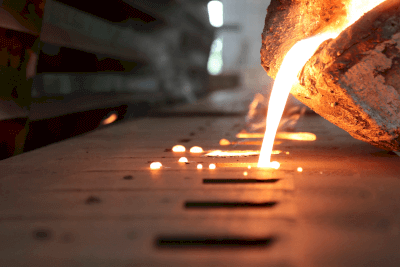What Is a Casting?
 Casting is a process where molten metal is poured into a mold to form a product. The flexibility in shapes is a key feature of casting, as it allows the creation of complex shapes by pouring molten metal into a mold. Post-casting processes often include forging, cutting, and heat treatment.
Casting is a process where molten metal is poured into a mold to form a product. The flexibility in shapes is a key feature of casting, as it allows the creation of complex shapes by pouring molten metal into a mold. Post-casting processes often include forging, cutting, and heat treatment.
Products manufactured by casting are commonly referred to as castings. The technique dates back to around 4000 BC in Mesopotamia, initially with copper.
Uses of Castings
Castings are widely used for various materials and applications:
- Cast Iron: Used in car engine parts, cases, etc.
- Cast Steel: Used in construction machinery parts, railroad couplings, etc.
- Copper Alloys: Used in pump and piping parts, fishing bells, etc.
Additionally, nickel alloys are used for turbine blades and valve bodies, titanium alloys for pacemakers and artificial joints, magnesium alloys for laptop bodies and cell phones, and zinc alloys for door knobs and connector parts.
Types of Castings
Casting starts with melting the material in an electric furnace, followed by pouring it into a mold and allowing it to harden. After cooling, the casting is removed from the mold.
Types of casting methods include:
- Mold Castings: Uses heat-resistant molds.
- Sand Castings: Employs sand molds.
- Investment Castings: Utilizes low melting point material for the model, coated with refractory material, offering high precision.
- Additional methods such as vanishing model castings with Styrofoam, gravity mold castings with heat-resistant steel, and die castings.
Continuous casting, predominantly used in the steel industry, allows for the continuous manufacturing of products from molten metal, differing from batch production in normal casting processes.